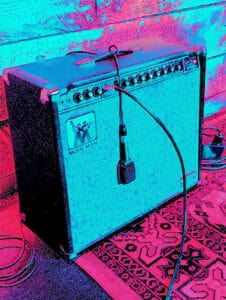As an Amazon Associate Playpedalsteel.com earns from qualifying purchases. This page contains affiliate links.
The pedal steel guitar has a sound that is compelling and extensive, often catching listeners’ attention with its remarkable expression.
But a pedal steel’s voice is greatly affected by what amplifier it plays through, which can quickly hold the pedal steel back from its true tonal nature, unless the amp has certain features.
Pedal steel guitars mean well, but they do make high demands on the amplifiers they run into, both sonically and technologically. That’s why it is important to use an amplifier that performs well and is versatile, thus handling these lofty requests from the pedal steel guitar.
The genuine sound these two can produce together, shows just how beneficial it can be to find an amp with the right features for the pedal steel…
What To Look For When Considering an Amp to Use
What is the best amplifier to use for pedal steel guitar? Are pedal steel amps the same as guitar amps? You’re not alone if you’ve ever asked these questions…
Finding an amplifier that works well for pedal steel can be tough, but rewarding. The amp must be able to handle the pedal steel’s large frequency range, hot output (need amps with higher wattage), and unique timbre. It may be best to first decide whether you’d prefer a solid-state amp, or a tube amp.
Tube or Solid-State?
Solid-State Amps
Solid-state amps can be great for pedal steel because they often have the ability to voice the pedal steel’s full frequency range, especially when a 15 inch speaker is in the amp. Many amps manufactured for pedal steel nowadays are solid-state, like amps from Peavey and Quilter.
Your pedal steel can often have a clean and transparent tone to it with solid-state amps, and many of these amps have the advantage of being lighter, cheaper, and lower-maintenance.
The clear and crisp tone you can get from solid-state amps can be great for many styles of playing, and for creating many types of tones. Pedal steel is often associated with shimmering, crystal-clear notes in the higher end of the frequency range and this type of amp often has the right features and functionality for capturing these on pedal steel.
I’ve been using the Peavey Nashville 112 (click to view on Amazon) for many years, which is an 80 watt solid-state amp designed for pedal steel with a 12 inch Blue Marvel speaker. It can reproduce the pedal steel’s frequency range well, for both necks, high-end and low-end frequencies.
The Nashville 112 has lots of built-in capabilities that are great for pedal steel like a XLR balanced direct output, pre-eq ins and outs, post eq ins and outs, and the headphone jack for silent practicing. Quilter Labs’ Travis Toy 15 Steel Guitar Amp is another choice if you’re looking for a quality sounding solid-state amp designed for pedal steel.
When deciding to use a solid-state amp it can be beneficial to think about the particular musical situation you’ll be using it in, and the tone you’d like to voice through your pedal steel with it. Often solid-state amps can sound great for certain playing situations, and you may find a tube amp to be more suitable for other environments.
Tube Amps
Many tube amps have a unique ability to create a great clean sound, just like the solid-state amps are known for, but also having the potential to create a lively tone that can push into the boundaries of distortion.
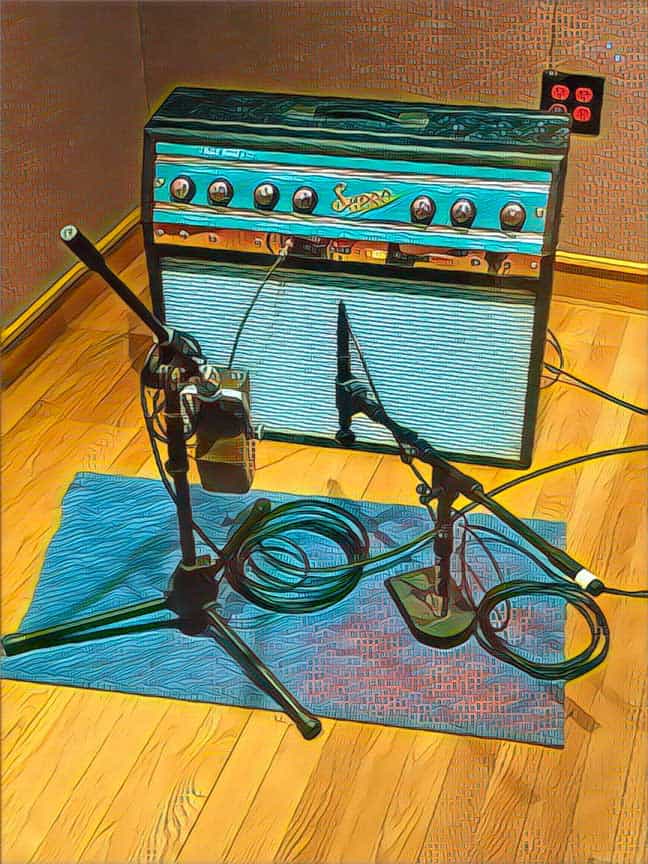
The distortion of tube amps can often have beautiful harmonic qualities, while still providing grit and tone that can spark a listener’s ears.
These amps have the advantage of sounding warmer, while also having some glassy growl. This can help make your bar slides and notes sound fuller and more alive.
Finding a tube amp that works well for pedal steel can be trickier though. The amp will also likely be more expensive, heavy, and loud. However, these are trade-offs that are totally justifiable though: the tone you’ll get from some of these can be the best out there for pedal steel.
Most tube amps that are used for pedal steel are vintage, as less manufacturers nowadays make tube amps with enough power/headroom to handle a pedal steel’s hot output and large frequency range.
Players commonly seek used Fender Twin series amps that were made during a certain era, and some of these can sound amazing with pedal steel guitar. Fender currently makes a ’68 Custom Twin Reverb (link to Amazon) that is a silverface reissue with 85 watts and two 12-inch speakers, which is another great option for pedal steel.
Music Man amps can also be nice for pedal steel guitar, which were made in the 1970s and 1980s.
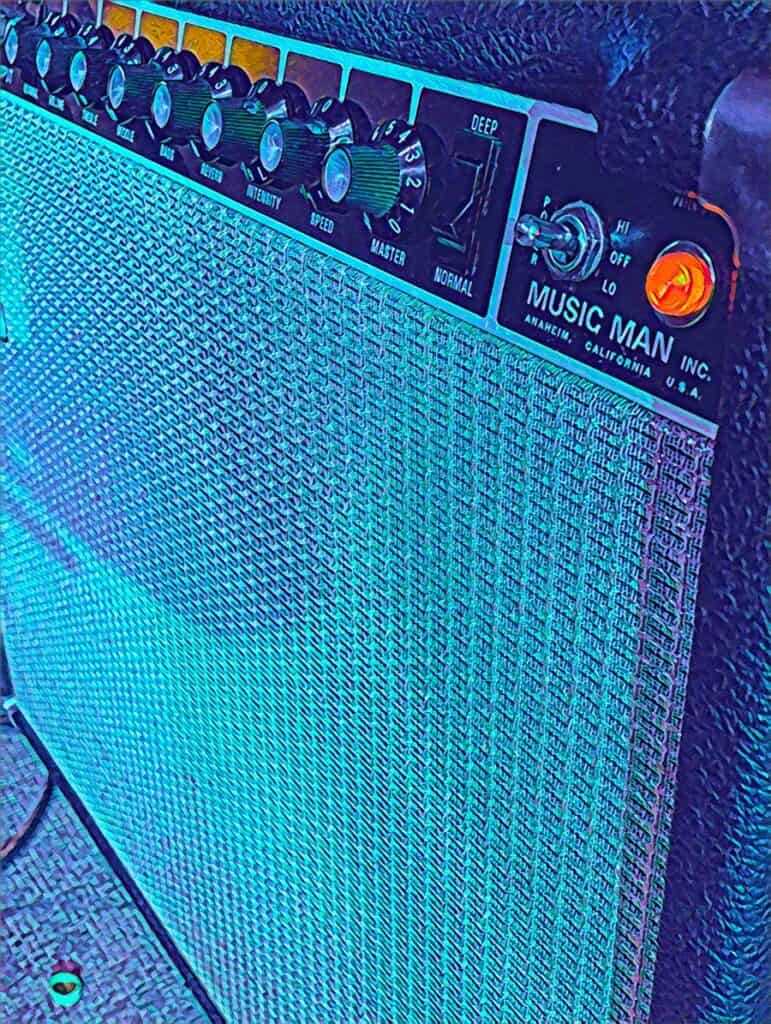
There are some tube amps that are still being custom made for pedal steel, such as Milkman amps, which are handmade in California. Many of Milkman’s amps were specifically designed by a pedal steel player to use with the pedal steel.
Deciding to use a tube amp may come down to what features and specifications the amp has, and what the available options are.
Amps Designed for Pedal Steel: Modern Options
There are some other great amps being made for pedal steel nowadays, and many of them will provide enough power and headroom, while also having large speaker sizes that are high in sound quality. Here are some that are worth checking out for pedal steel…
- Quilter Steelaire Amplifier (200 Watts, 1×15″): This is a powerful, clean-sounding amp with a nice frequency response for pedal steel. It has an Eminence 15″ neodymium speaker in it, and is surprisingly lightweight for how powerful it is.
- Peavey Session 115 Amplifier (500 Watts, 1×15″): This amp features a 15″ Black Widow speaker, which is renowned among pedal steel players for its great voicing and articulation of notes. It also has Pre EQ and Post EQ patches, and nice options for equalization.
- Quilter Travis Toy 15 Steel Guitar Combo Amp: One of the neat things about this amp is that it has a removable Tone Block 202 head, which can be used for recording sessions. It also has a custom signature Eminence Double-T 15 inch speaker and tilt back legs for using it on-stage.
Features and Specs of Pedal Steel Amps
There can be many features to consider when using an amplifier for pedal steel. All in all though, it will come down to looking at a few main things, as the other features will more specifically add enjoyment and convenience to amplifying your pedal steel guitar.
Besides deciding whether to use a solid-state or tube amp, the amp’s power and speaker size are very important in determining how pleasing the amp will sound with pedal steel.
Power and Speaker Size
Can the amplifier handle the pedal steel guitar’s hot output and large frequency range, especially when playing the C6 neck?
Sometimes it can feel like 99% of amplifiers at most music stores aren’t made to handle the pedal steel’s signal. Because these places stock more inventory for six-string guitar, most of their amps either don’t have enough headroom, or they have too small of a speaker size. Without a suitable combination of these factors, these amps just can’t handle the large frequency span of the instrument, and often distort from a lack of clean headroom in the power department.
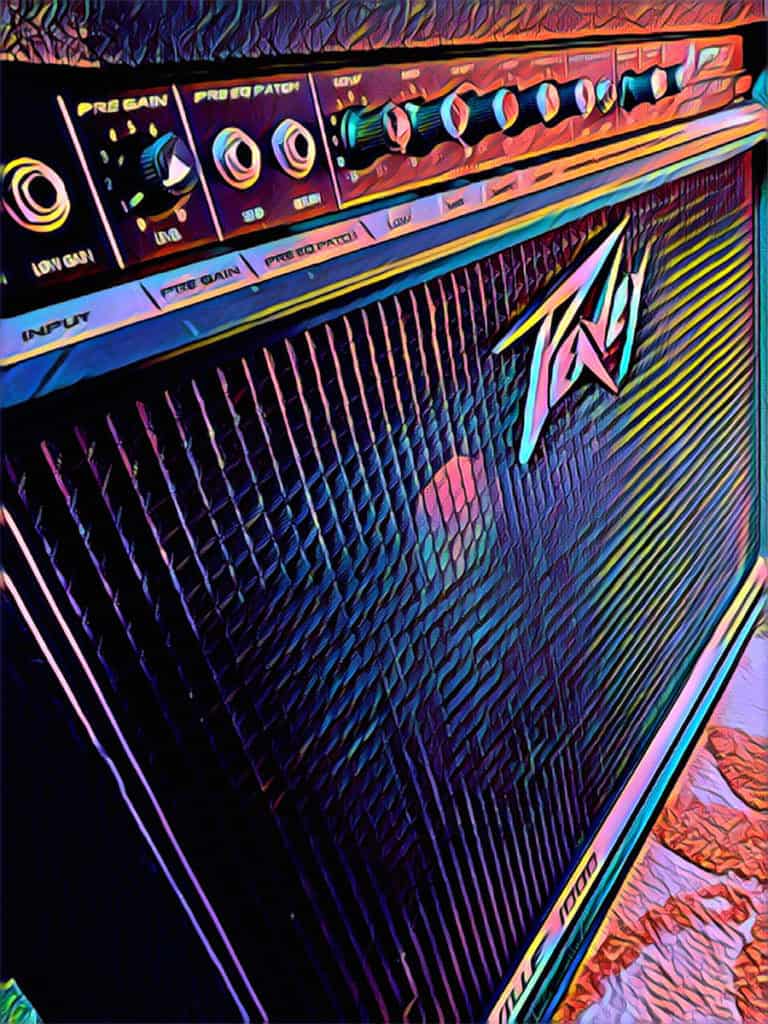
A pedal steel amp usually requires at least a 12-inch speaker to accurately amplify the full range of the instrument. 15-inch speakers are also commonly used to allow extra low end (bass note frequencies); especially for the C6 neck and 12-string tunings, where lower notes can be played. Some 12-inch speakers can handle these low notes just fine though.
If you are playing the C6 neck, you’ll especially want to consider the differences between a 12-inch and 15-inch speaker for the lower end. The E9 neck is closer to a six-string guitar’s frequency range, so the difference between these two speaker sizes won’t be as impactful, although it will still affect the sound.
With the higher end notes and harmonics of either tuning, combined with the C6 neck’s bass notes, more power and headroom in an amp can be crucial in expressing the pedal steel’s true sound, especially with the pedal steel’s hot pickups.
Pre EQ and Post EQ Patches
Equalization patches allow a player to bypass or utilize the EQ circuitry within the amp, giving a player control over how they want the amp’s EQ section to affect the volume pedal or EFX pedal’s signals.
This can be beneficial if you’re utilizing certain effects pedals, which you can run Post EQ so that your signal hitting the pedals already has the EQ tone settings that you like to use on the amplifier. I posted an article that dives deeper into using delay with pedal steel, and running a delay pedal with the EQ patches can be a nice way to use this feature on amps with pedal steel.
Reverb
This may seem silly, but some amps don’t have a reverb unit built into them, or they don’t have a reverb control. Some smaller, or older amps are like this.
For pedal steel we crave reverb, so consider this and where you’ll get that reverb from. Unless you’re playing in a large concert hall with natural reverb, you’ll want a nice-sounding reverb to come with the amp if there is an option.
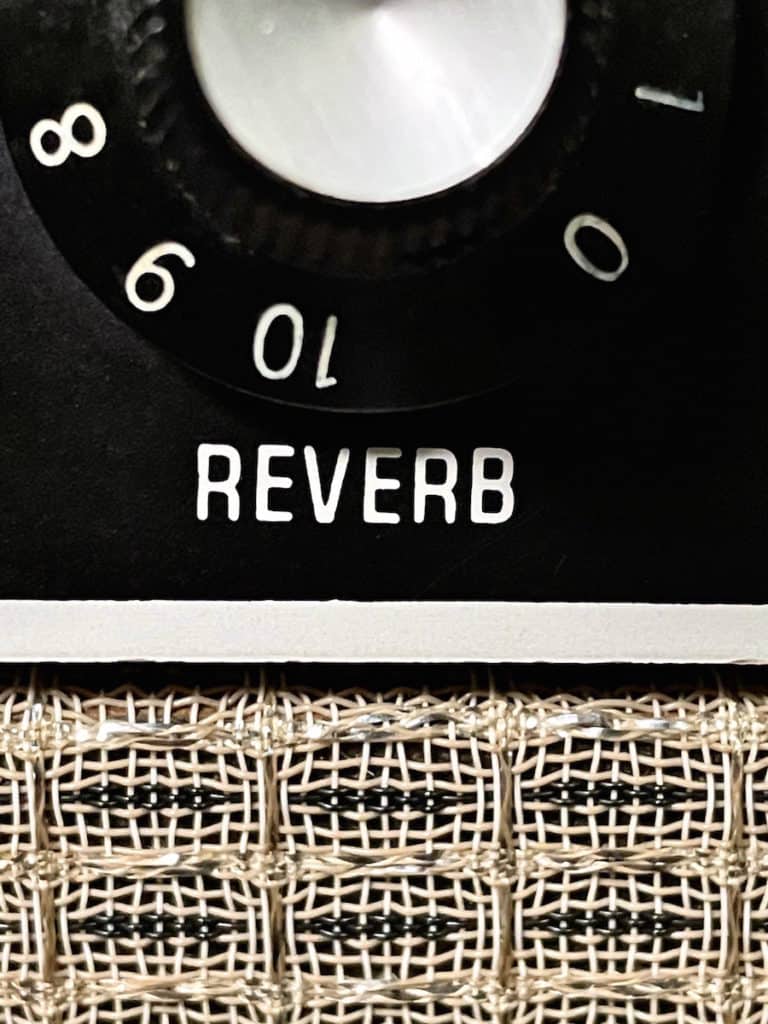
Fender amps usually have that classic reverb sound, and a good reverb unit too.
If the amp you’re using doesn’t have reverb, or the reverb on it doesn’t sound very natural, then you can always use a reverb pedal to add reverb to your signal.
A great one to use for pedal steel is TC Electronic’s Hall Of Fame 2 Mini (link to Amazon), which sometimes sounds better than the actual reverbs built into some amplifiers. I have a small vintage Fender Champ that I use for pedal steel practice and rehearsals, that oddly enough doesn’t have reverb built-in but sounds great with this pedal.
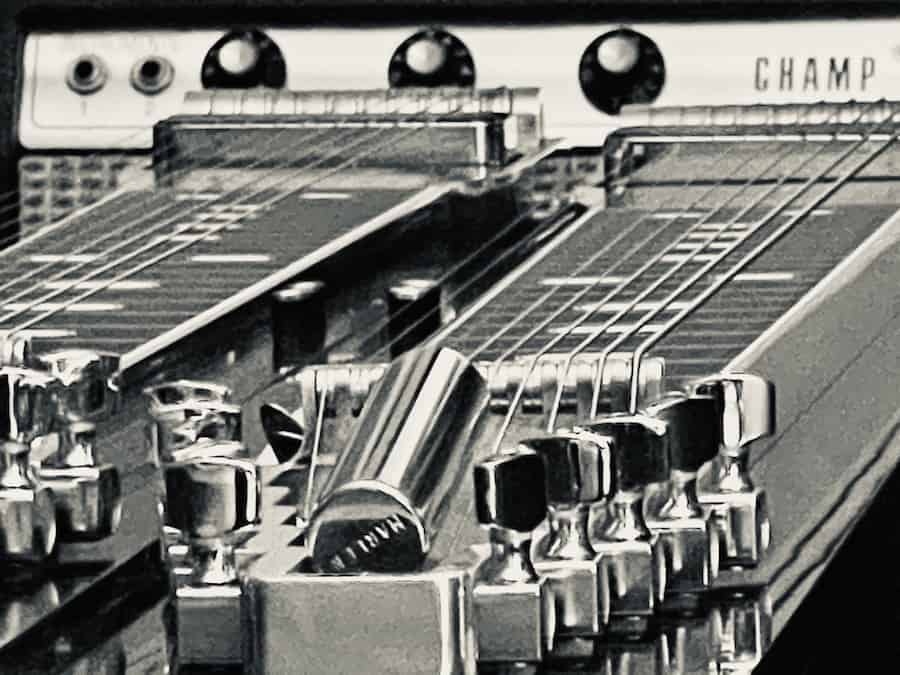
EQ Functions
Also, consider what functions or capabilities the amplifier has for equalization, which can give you more tone shaping possibilities.
Sometimes amps will have extra EQ features such as parametric EQ, which can give you more control over certain frequencies, especially mid frequencies.
The amount and types of EQ controls will vary between amps, so using your ear is always beneficial when deciding how to EQ it. I wrote an article that goes more in-depth on EQing amps for pedal steel, and it can always be nice to have certain EQ settings and a particular mindset when dialing in sounds on your pedal steel amp.
If the amp sounds good naturally, then using the EQ on it will likely only benefit your tone, regardless of the amp’s EQ functions. However, when you’re already getting a good sound from your amp, then less is usually more when deciding to EQ it further.
Having extra EQ capabilities and functions can be nice to have, and often times EQing just depends on the particular amp. Experimenting with the amp’s EQ settings can be enlightening, and help you better understand how they affect that particular amp’s sound.
Direct Out (XLR)
Does the amplifier have a direct output, which is balanced and XLR? A direct out can run the amp’s signal cleanly into your destination, regardless of whether or not you want sound to come out of the amp’s speaker.
This can be great for running your amp’s signal directly to recording consoles, vintage analog gear, and even soundboards, which can be beneficial for studio sessions or live shows.
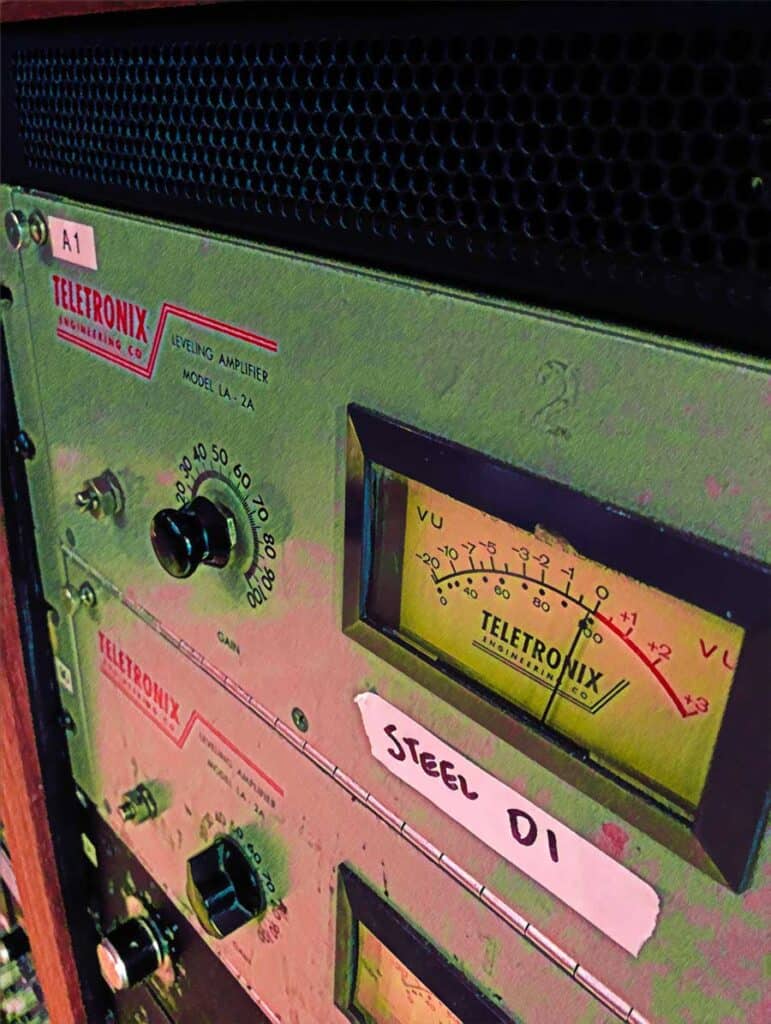
Next time you record your pedal steel, try running it directly into the recording console’s input, as well as miking the amp’s speaker too.
When mixing, you can blend these two signals together for a mix of bolder, clean dry signal from the direct out, and the more exciting lively miked signal. Pan one hard right and the other hard left in the stereo field, to add stereo thickness and a wide image to your pedal steel sound.
Weight
When choosing a pedal steel amp, you may want to consider how heavy the amp is, and how portable it is.
If you are gigging a lot, then having a lighter amp may help you physically. Some amps have wheels on them to ease transportation.
Although a lot of times a well-engineered amplifier is going to weigh a lot no matter what, it may be nicer to have a 12-inch speaker, or a solid-state if you’re looking to lighten things up a bit.

Every amp will be different though, so just because an amp is a solid-state doesn’t mean it will always be lighter. I’m often surprised at just how much heavier my Peavey Nashville 1000 is compared to my Music Man tube amp, and both have 15 inch speakers.
Amps for Practicing
If you’re using your amp in the practice room or at home mostly, then often just having an amp that suits your sound will do the job. Think about what you’d like to hear tonally as you create and fine tune your playing in these settings, and try to use an amp that you enjoy playing through.
Oftentimes when practicing pedal steel, there isn’t a need to play your amp as loud as you would when with a band. Using the low gain input on your amp can help ease the loud dynamics that powerful amps often have, and can be a great way to focus more on the sound coming from your technique and the actual instrument.
Headphone Jack
Most amps have these nowadays, and it’s a nice option to have if you live with others. Even though that sweet Pat Martino octave displacement riff you’ve been practicing on your pedal steel is the hippest lick of the day, it may not be fun for someone else to hear for hours at a time!
Using an Amplifier Built for Electric Guitar
Sometimes if you’re in a crunch, or at a jam, or experimenting, you’ll need to play your pedal steel guitar through an amplifier that is built for electric six-string guitar. Many of these amps are well-designed, sound good, are affordable and reliable, but they just don’t have the physical capabilities of reproducing the pedal steel’s spectral bandwidth (frequency range).
However, this doesn’t mean that you can’t get great sounds and cool effects from these guitar amplifiers though. Sure, you will lose a good bit on the high and low ends, and it is more likely to distort and dirty up your signal, but for blues and rock n’ roll they can work great until you’re back on a steel amp.
Mesa Boogie makes amps that can have a nice distortion tone, which can be great to use for getting a bluesy, classic rock six-string guitar tone from your pedal steel.
Even though it didn’t capture the full frequency range of the pedal steel, I used to play through a Mesa Boogie F-50 for more blues/rock based tunes. I used it for numerous gigs, and it sounds great with pedal steel, with a Duane Allman type of tone for bar slides. It was awesome to use, but I eventually began missing the clarity and versatility of a pedal steel amplifier.
Many Fender tube amps designed for guitar can sound great for the mid frequencies of pedal steel. Fender tube amps often have such sparkling, clean tones that using them with the E9 neck can be nice, especially with the spring reverb that they’re known for. If you plan on playing the E9 neck below the 12th fret, without a lot of harmonics, Fender tube amps for guitar can sound magnificent with pedal steel.
If you have various guitar amps around, try running your pedal steel through them, and this can give you insightful ideas as to what your pedal steel guitar can sound like in different amplification situations. You can also begin to hear and learn specific frequencies that you are gaining or losing when you switch between the amps. If you play through a guitar amp for a few days, then switch back to your pedal steel amp, you’ll be amazed at how many frequencies you recover and rediscover!
Conclusion
When considering what amp to use for pedal steel, in the end it will come down to using your ears to find one that you enjoy playing through.
The tonal potential of the pedal steel and its amp can spark a collaboration that shows just how deep of a bond the two actually have, and they can produce some of the most extraordinary sounds in music.
Thanks for checking out this page, hope it is helpful and makes playing more enjoyable! If you’re interested in diving deeper into playing E9 pedal steel, check out these resources and guides…
The Chord Guide for E9 Pedal Steel (E-Book, Digital Download)
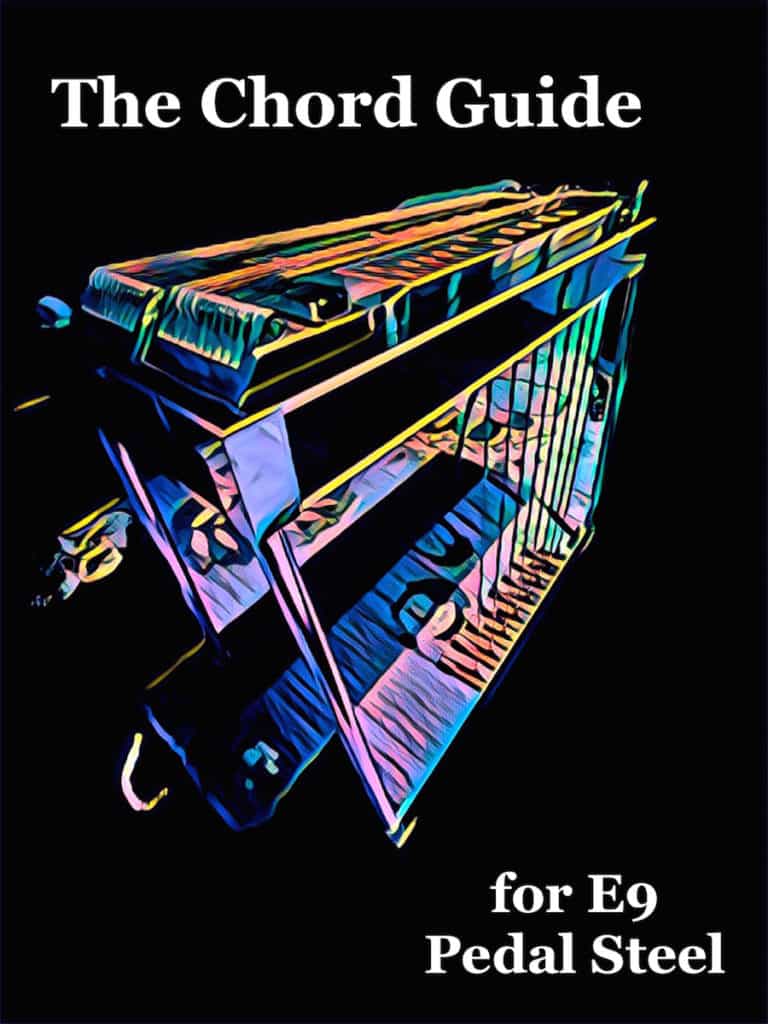
Learn the chords on the E9 neck in a way that makes playing simple and enjoyable…
- Almost Every Chord You’ll Ever Need for E9
- Intuitive and Easy to Use
- Make Use of Pedal and Lever Combinations
- Example Tabs of Chord Movements
- Easily Utilize the Nashville Number System
- Great For Any Key and Style of Music
Includes a bonus section of over a hundred pages of extra chord charts, key references, and more!
You may also like…
200 Country Riffs & Licks for E9 Pedal Steel
Add these country licks to your playing repertoire…
- Easy to Read Format
- Includes Rhythmic Notation
- Playing Over Chord Changes
- Great for Country, Alt-Country, & Honky-Tonk Styles
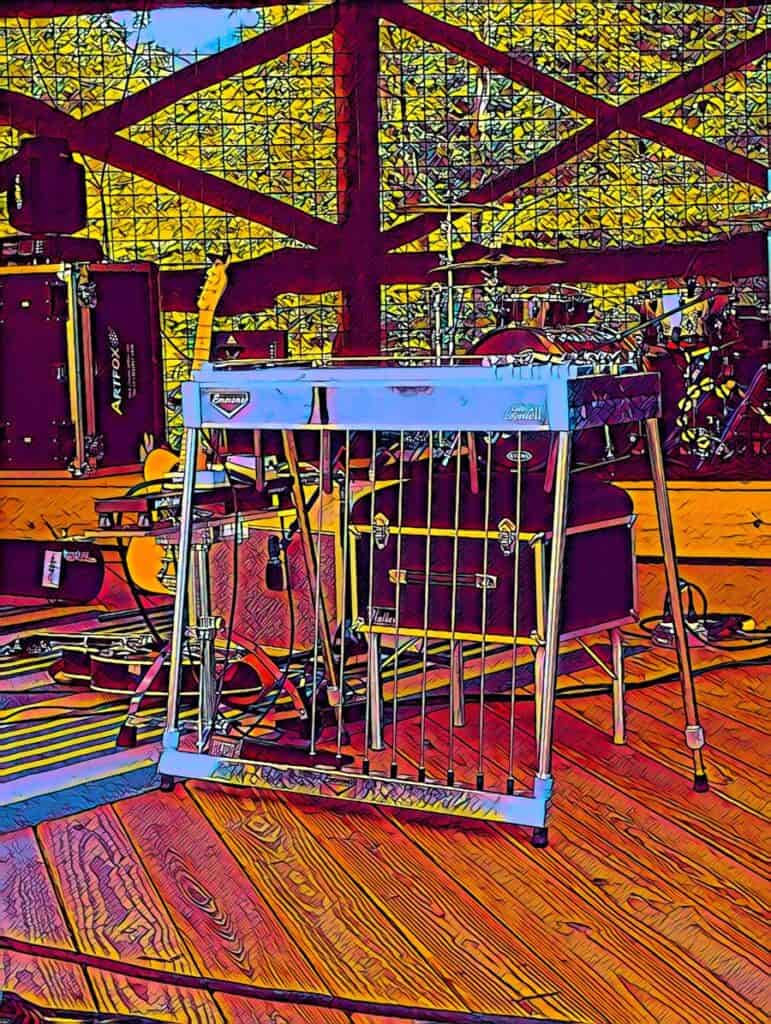
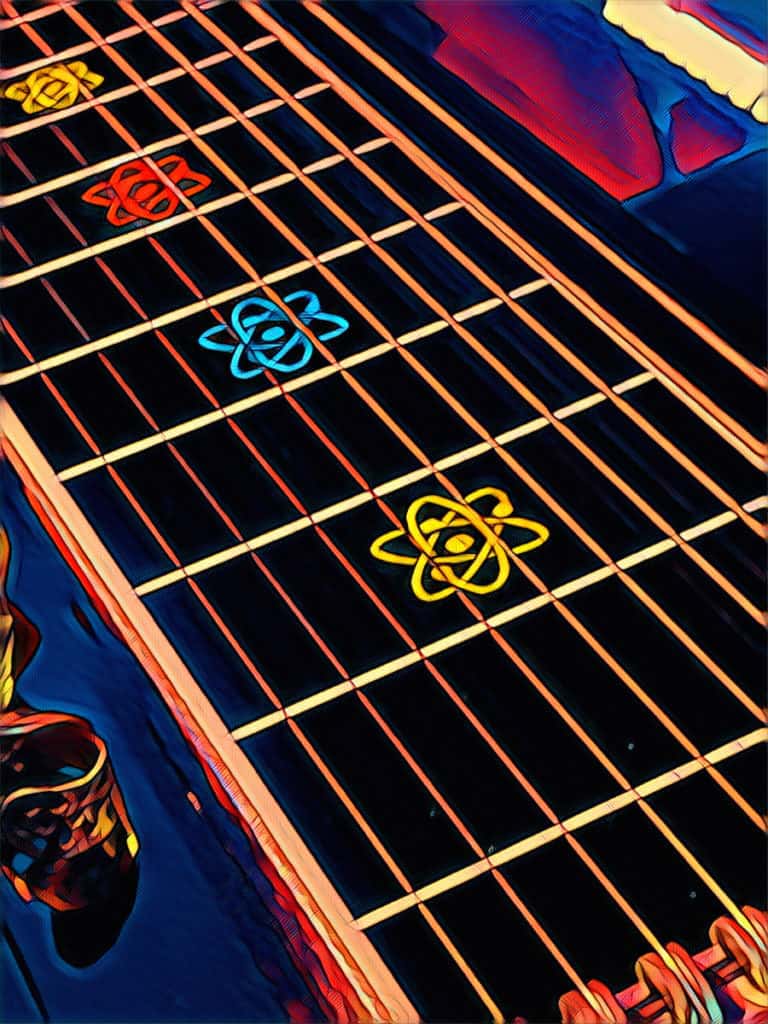
The Scale Book for E9 Pedal Steel
Over 1,000 Pages with Tabs and Diagrams!
- Easy to Use Reference for Practicing
- All Major and Minor Pentatonic Scales, Modes, Major Scales
- All Keys, and Covers the Fretboard
- Includes Pockets of Scales
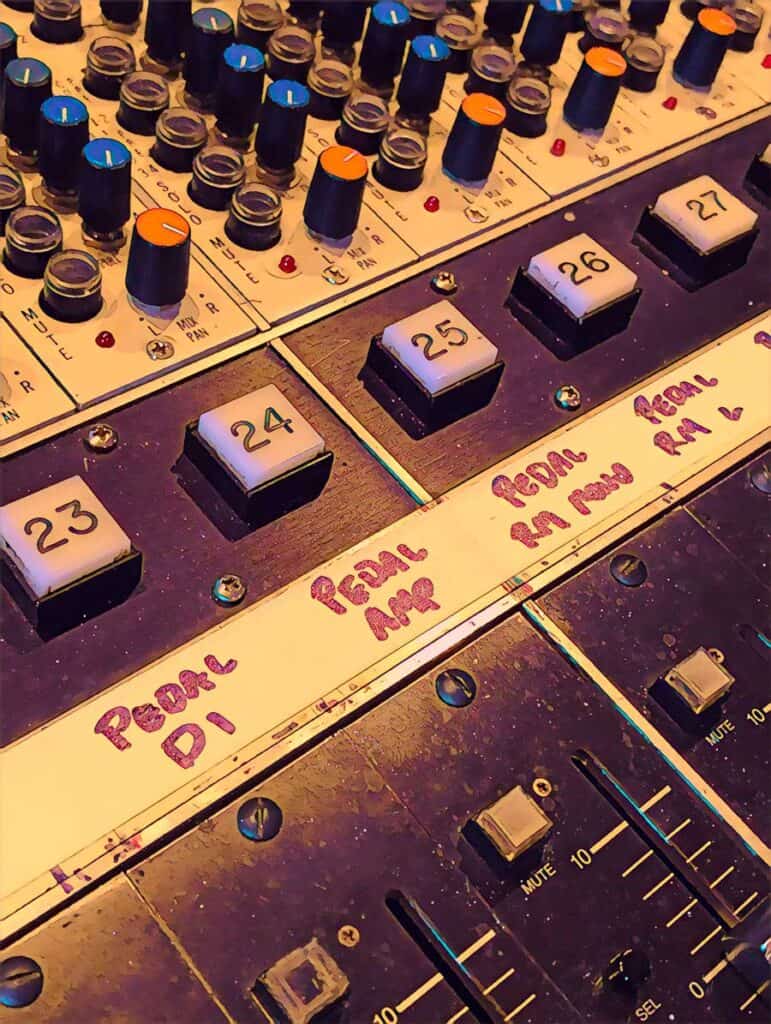
Harmonized 6ths
- Hundreds of Riffs, Licks, and More
- How To Play Sixth Intervals on the E9 Neck – Over Any Chord
- Utilizes The Pedals and Knee Levers
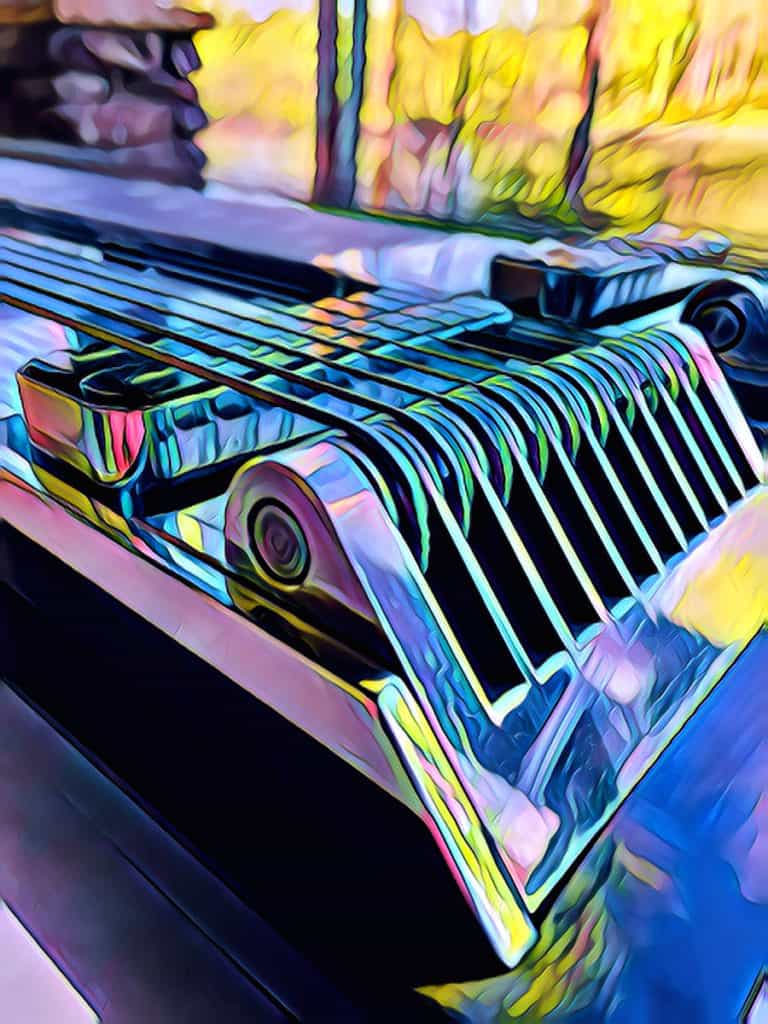
Right Hand Picking & Blocking
- An In-Depth Guide to Picking and Blocking
- Perfect Your Technique
- Includes Graphics, Illustrations, & Practice Exercises
Click here for pedal steel tabs, scale diagrams, and chord charts…
